#nivernais
Explore tagged Tumblr posts
Text

Tomb of Bernadette in the St. Gilard Convent in Nevers, Nivernais region of France
French vintage postcard
#tomb#convent#historic#the st gilard convent#region#bernadette#photography#postal#ansichtskarte#nivernais#photo#sepia#vintage#postcard#france#briefkaart#gilard#nevers#postkarte#tarjeta#carte postale#ephemera#postkaart#french
22 notes
·
View notes
Text

La Machine (Nièvre), l'avenue de la République.
Aujourd'hui:
33 notes
·
View notes
Text



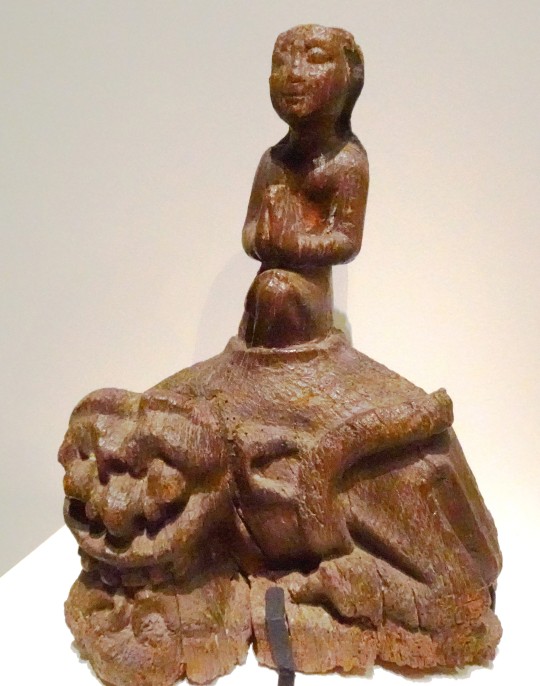


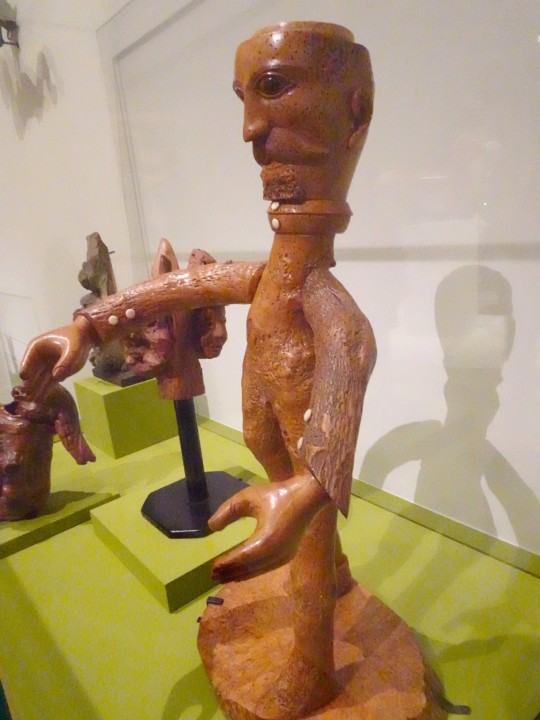
Marseille, le MuCEM et sa nouvelle collection permanente (à mes yeux, bien plus intéressante et mieux présentée que la précédente…)
Suite (et fin ?)
statue de sorcier ou de guérisseur...aux pieds fourchus !, sans doute utilisée pour des rituels de désenvoûtement - Nivernais, 1900-50
"L'Homme- Eléphant du cirque Landri" - France, fin XIXe s.
vase - Calabre, avant 1970
Sainte Marguerite sortant indemne du Dragon - Pornichet, "Bretagne", XVIIe s.
culot - Poitou-Charentes, XIIe s.
bascule, Molla Nasreddin the Antimodern - Pologne, 2012 ; automate femme-chat - Belgique, 1890; sujet de manège, Sirène - Neustadt en der Orla, Allemagne, 1900
voir 1
#marseille#MuCEM#monstre#diable#démon#sorcier#nivernais#nevers#homme-éléphant#monstre de foire#cirque#cirque landri#landri#pacha#pologne#manège#bascule#catwoman#belgique#chat#culot#dragon#poitou#sainte marguerite#pornichet#bretagne#art gothique#désenvoûtement#exorcisme#guérisseur
4 notes
·
View notes
Photo
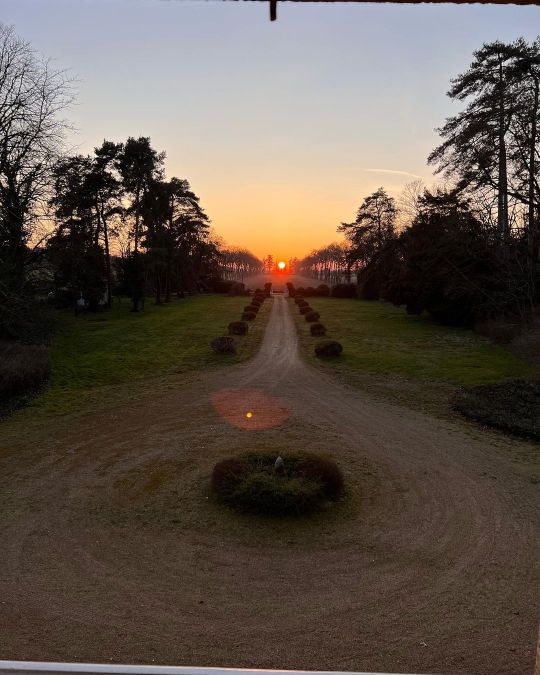
On s’approche de l’équinoxe de printemps lorsque la perspective d’Auzon vient doucement se placer dans l’alignement du soleil couchant.. the spring equinox is soon coming when Auzon's perspective is slowly placed in the alignment of the sunset #chateauauzon #auzon #perspective #alignement #vue #view #sunset #garden #nivernais #bourbonnais #equinox #equinoxe #equinoxedeprintemps (à Parc et château d'Auzon) https://www.instagram.com/p/Cpk9t3xjx8z/?igshid=NGJjMDIxMWI=
#chateauauzon#auzon#perspective#alignement#vue#view#sunset#garden#nivernais#bourbonnais#equinox#equinoxe#equinoxedeprintemps
2 notes
·
View notes
Video
youtube
Top 10 facts about the #GriffonNivernais - an ancient wiry coated French dog breed, famously known as a skilled wild boar hunter, with independent, friendly and active character.
0 notes
Text
100 years ago:


BORD DE LOIRE.
La Charité-sur-Loire.
#patrimoine#briefkaart#years#photography#loire#vintage#100 years ago#tarjeta#postkaart#french#postal#photo#postcard#historic#carte postale#nivernais#monument#ephemera#sepia#nievre#france#ansichtskarte#postkarte#architecture#charité-sur-loire
36 notes
·
View notes
Text

PLOUGHING IN THE NIVERNAIS, 1849 by ROSA BONHEUR
Animals were her main focus, and here, twelve oxen are grazing peacefully as they prepare the ground for the following year’s planting. Her emphasis on the earth, the animals, and the landscape conveys a dignified narrative of traditional peasant life, labour, and tradition.
The humble sense of realism that emanates from the canvas recalls that work of CAMILLE COROT and GUSTAVE COURBET. Similar to the Realists, BONHEUR presents man and nature working seamlessly together to yield harvest from the land.
BONHEUR uses a series of intersecting diagonals to draw the viewer in and out of the sunlit composition as the solid, straight line of a ploughed field retreats from the foreground to the center of the painting. BONHEUR’s use of size and perspective is grandiose and, in this way, reminiscent of the Romantics’ canvases.
The two groups of six gleaming CHAROLAIS glisten in impressive muscular stride, pleasing the eye in their subtle variations of colour. The softness, elegance, and muteness of palette also recall the calm, wistful landscapes of earlier DUTCH MASTERS, with whose work BONHEUR was also very familiar.
#ploughing in the nivernais#rosa bonheur#realism#realism painting#realist painting#realist painter#realist
6 notes
·
View notes
Text
I know I spent two days without posting any lesbian pride post lol but I swear I'm gonna post two posts per day in the following days to make up for it. I am again going to talk about an artist, but from a different period this time.
Rosa Bohneur !
(I love her name by the way... Bohneur means happiness in french and that's such a pretty name to have)
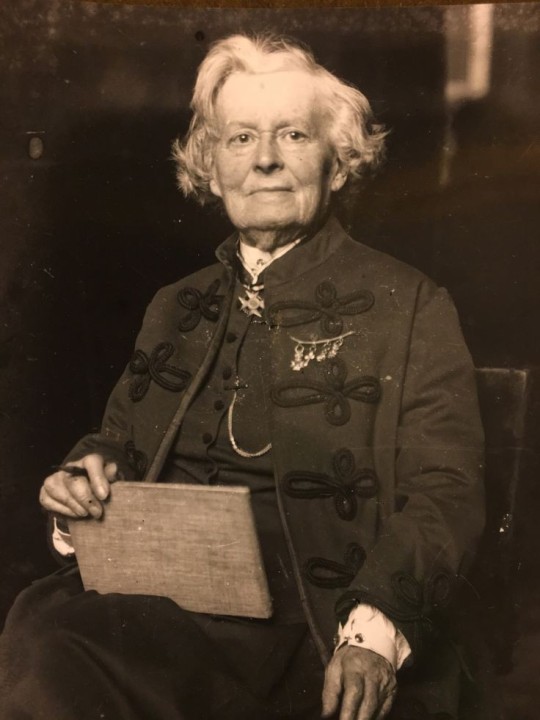
Marie-Rosalie Bonheur, known as Rosa Bonheur, was born in 1822 in Bordeaux and died in 1899 in Thomery. She was a French painter and sculptor specialising in representations of animals.
She has kind of an interesting family story (mother adopted by a rich guy who found out later who was her real father, siblings all artists, father who met a lot of interesting people, links with many famous people...) but it would be too long to talk about it and I want to focus on Rosa herself. Do check it up if you're interested!
During her youth, Rosa Bonheur had a reputation for being a tomboy, a reputation that followed her throughout her life and which she made no attempt to deny, wearing her hair short and later smoking cigarettes and cigars. Her emancipated lifestyle never caused a scandal, even though she lived in an era that was very concerned with convention. Like all women of her time, Rosa Bonheur had to apply to the Prefecture of Paris for a cross-dressing permit, renewable every six months, in order to wear trousers, in particular to attend livestock fairs, travel or ride horses.
Here's one of her permits, from 1857 :
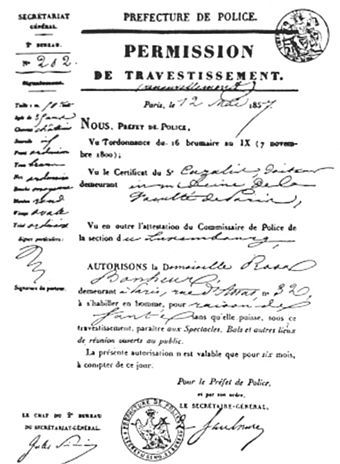
And though many historians tried to deny the fact that she was a lesbian, she always refused to marry a man, has only ever had relationships with women and literally wrote that she never felt any sort of love, attraction or tenderness for men, "besides a frank and good friendship for those who had all my esteem". After the death of the woman she loved, she also wrote "If I'd been a man, I'd have married her, and they wouldn't have made up all those silly stories..." You got it : even if she didn't shout it from the rooftops, Rosa was very probaby a homosexual woman.

Rosa Bohneur grew up in a fairly wealthy family, thanks to the financial support of her mother's adoptive father. But when her mother's father died, the family was left without any such support, and fell into dire poverty. When Rosa was 11, her mother died, which deeply traumatised her. She kept a lifelong admiration for her mother.
In 1836, at the age of 14, she met Nathalie Micas, who became her lover. Only Nathalie's death 53 years later separated them.
Her father remarried in 1842 to Marguerite Peyrol, with whom he had a last son, Germain, who would also become a painter. Rosa Bonheur did not get on well with her stepmother and when her father died in 1849, she left the family home to live with the Micas.
After her mother's death, Rosa Bonheur went to primary schools, was apprenticed as a dressmaker and then went to boarding school. Eventually her father took her into his workshop, where her artistic talents were revealed. He was her one and only teacher. Gradually, she developed a passion for animal art, which became her speciality.
She exhibited for the first time, at the age of 19, at the Salon of 1841. She won a 3rd class medal at the Salon of 1845, and a 1st class medal (gold) at the Salon of 1848. This award enabled her, at the age of 26, to obtain a commission from the State to produce an agrarian painting (paid 3,000 francs). The painting resulting from this state commission, "Labourage nivernais" was supposed to go to the Musée des Beaux-Arts in Lyon. But it was so successful at the 1849 Salon that the Beaux-Arts department decided to keep it in Paris, at the Musée du Luxembourg. After Rosa Bonheur's death, the work went to the Louvre, before being transferred to the Musée d'Orsay in 1986.

When her father died in March 1849, Rosa Bonheur replaced him as director of the École impériale gratuite de dessin pour demoiselles (or École gratuite de dessin pour jeunes filles). She remained in this position until 1860: ‘Follow my advice and I'll turn you into Leonardo da Vinci in skirts’, she often told her pupils.
In 1860, she moved to a huge house in By, where she had a huge workshop built, and ample space for her animals. One of her relatives wrote: “She had a complete menagerie in her house: a lion and a lioness, a deer, a wild sheep, a gazelle, horses, etc. One of her pets was a young lion she let run around. My mind was freer when this leonine animal died".
In June 1864, Rosa was visited by Empress Eugenie, who invited her to lunch at the Château de Fontainebleau with her husband. The following year, Eugenie returned to see her, to present her with the Legion d'honneur herself. Rosa is the ninth woman and the first artist to receive this distinction. About this, The Empress said :
“At last, you've been knighted. I am delighted to be the godmother of the first woman artist to receive this high distinction. I wanted the last act of my regency to be devoted to showing that, in my eyes, genius has no sex."
She was also the first woman to be made an officer in this order, in April 1894 (first female officer of the Legion d'honneur).
Rosa traveled extensively with her lover Nathalie, herself a painter and mechanical enthusiast (she invented and patented a railway braking system), and painted many pictures inspired by her travels.
In 1889, Nathalie died after some 50 years together. It was then that Rosa expressed her regret at not having been able to marry her.
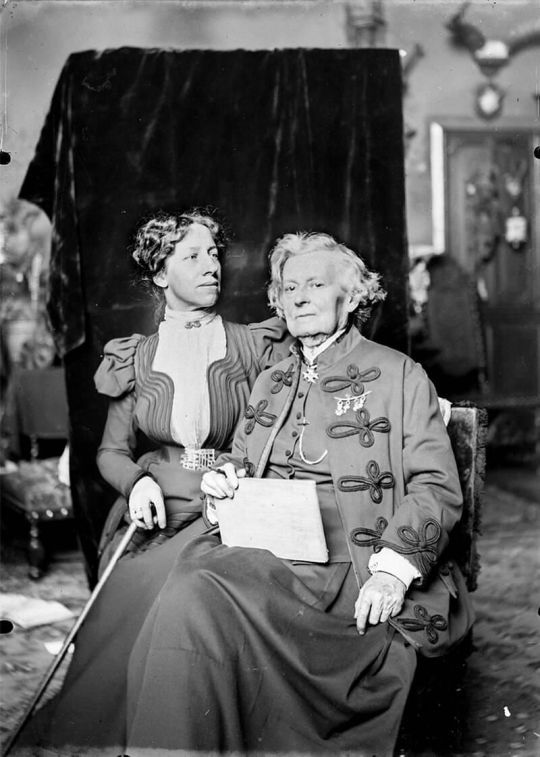
After Nathalie's death, Rosa met Anna Klumpe, a talented American painter. The two women moved in together some time later.
Rosa Bohneur died of pulmonary congestion in 1899, without having completed her last painting, “La foulaison du blé en Camargue”, a monumental canvas she had planned to exhibit at the 1900 Universal Exhibition.
She is buried in Père Lachaise cemetery, alongside Nathalie, her parents and Anna (who died years after her). She left her entire fortune to Anna, who, in 1908, published a biography of Rosa Bonheur and created a Rosa-Bonheur prize at the Société des artistes français. The Société des Artistes français posthumously awarded her the Medal of Honor shortly after her death.
Rosa could have had military honors at her funeral, but she specified in her will that she did not wish this.
There's a lot of interesting things to say about Rosa, her art and her history, so I suggest you do some research on her! She was a very talented and strong-willed woman who had a huge impact on French art and left a considerable cultural legacy.
Here are some of her paintings :
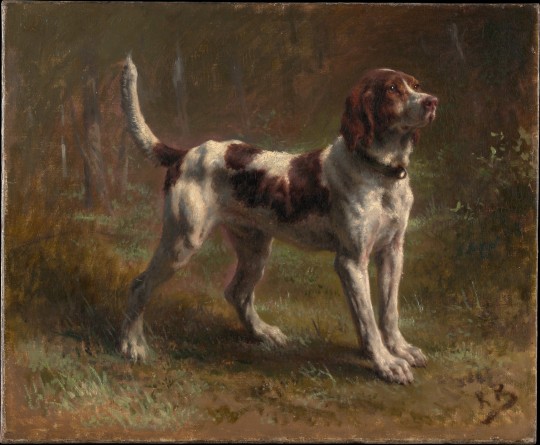
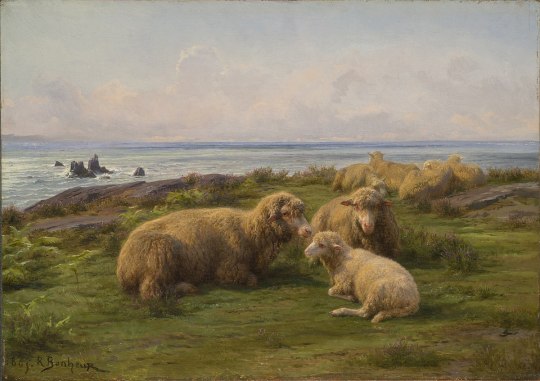
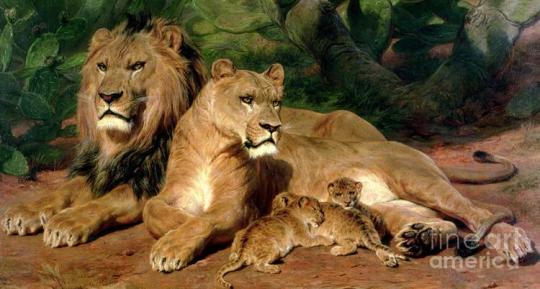
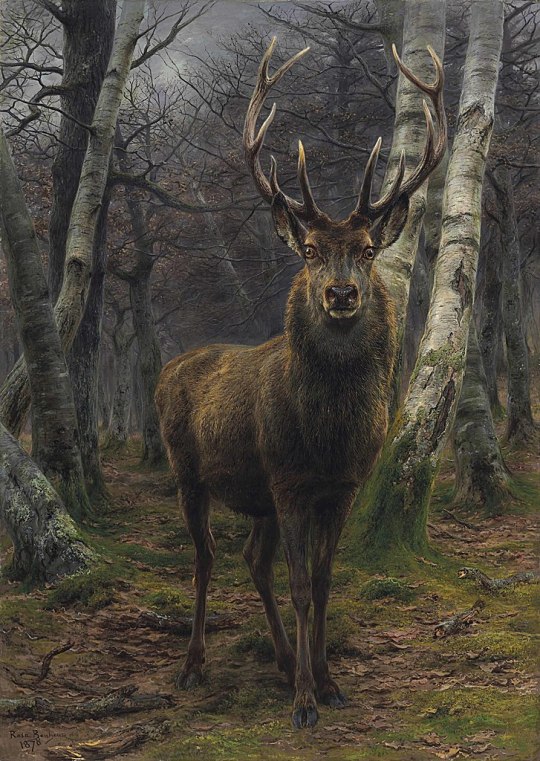
I personally love them ! I am not a painting expert, I just find them sooo pretty.
See you tomorrow :)
#lesbian#lesbian pride#pride#pride month#female homosexual#female homosexuality#rosa bonheur#french art#painting#art#lesbian history
225 notes
·
View notes
Photo
100 years ago:





Le souffle au coeur / Murmur of the Heart Louis Malle. 1971
Park 16 Rue Joseph Duriaux, 58360 Saint-Honoré-les-Bains, France See in map
See in imdb
#old#postcard#vintage#monument#photography#architecture#photo#nivernais#patrimoine#french#saint-honoré-les-bains#parc#france#park#carte postale
28 notes
·
View notes
Text

View of Chinon, Nivernais region of France
French vintage postcard
#postal#france#historic#french#ansichtskarte#sepia#vintage#tarjeta#view#briefkaart#photo#chinon#postkaart#ephemera#postcard#postkarte#photography#nivernais#region#carte postale
11 notes
·
View notes
Text
When talking about the French Père Noël, we have to talk about a variation of his that is NOT Saint Nicolas. I already evoked several times the various names of the Christmas gift-giver (Père Noël, Bonhomme Noël) and how he was tied to the gift-giver of the beginning of December (Saint Nicolas). But there was also a gift-giver at the end of the year... A gift giver of New Year's Eve or New Year's Day. Remember when I talked before of "Père Etrennes" or "Bonhomme Etrennes"? The "étrennes" are a French tradition whose closer English equivalent would be the word "handsel/hansel".
The étrennes were originally gifts that were given to friends, family and other next of kind at the beginning of January to celebrate New Year. Today the tradition has massively evolved - étrennes are given at the end of December rather than early January, it is money rather than gifts, and they are now a gesture of kindness destined to those employed by you or that work for the community (the fireman, the mailman, the housekeeper, the garbage collector...). But despite this evolution, "étrennes" stayed associated with an appreciative and kind giving gesture around New Year. And where there's gifts, there's a gift-giver...
This website presents us with this picture, a 1930s postcard, and says it could be the Père Fouettard... or the Père Janvier (Father January).
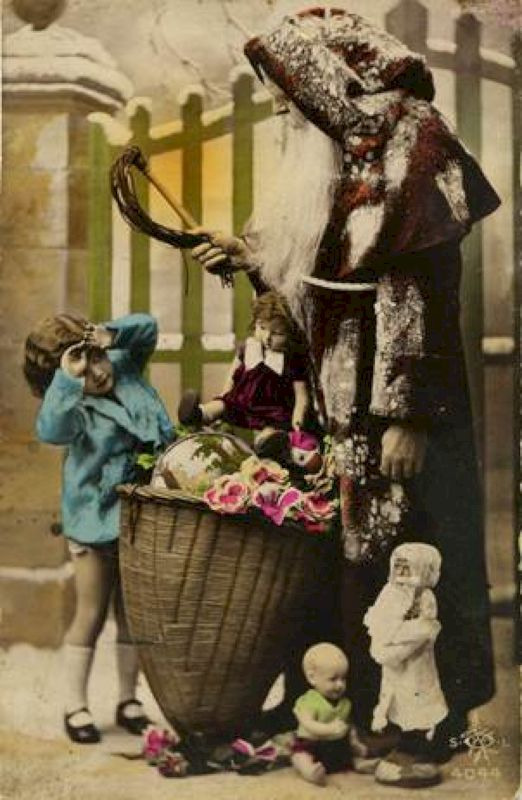
In the French region of Bourgogne, there was no "Père Noël" or Father Christmas in the early 20th century: rather there was Father January, Père Janvier, who came around New Year to give the étrennes - the gifts. By the 1930s the tradition was still very strong, especially in the Morvan and the Nivernais - as well as in the Nord-Pas-de-Calais (Father January had moved to the North of France when in the mid 19th century a lot of people from the Morvan went to work in the mines there). And from the 1930s to the 1960s, in all those areas, there was a transition from Père Janvier to Père Noël, resulting in the children of those three decades to have the benefit of two mysterious supernatural benefactors coming at the end of the year... Before Père Janvier stopped coming by the 60s, definitively replaced by Père Noël (the Americanized one of course, remember post-50s Père Noël is just Santa Claus with a different name).
This other website goes into more details about the world of Père Janvier - or rather of Bonhomme Janvier (Old Man January/The January Man).

Le Père Janvier, or Bonhomme Janvier, existed for a very long time in the tradition of the Berry region, before the Père Noël was even introduced. Not just in the Berry, but also in the Morvan and in all of Bourgogne - and even in many others areas of France! Lyon knew of him, the Haute Marne, Saône-et-Loire, Ardèche - they all had records of Father January, this white-bearded old man that brought gifts to children on the 1st of January. In the Berry region, the Père Janvier usually left sweets inside in their slippers for New Years Day, and on New Years Eve chimneys were carefully cleaned up so he could enter the house unsoiled.
And just like Saint Nicolas or Père Noël, Bonhomme Janvier ALSO was followed by Père Fouettard, with his wicker basket filled with "martinets" (beating/whipping tools for naughty children):

While sometimes Bonhomme Janvier brought many toys or sweets (found in the children's shoes or "sabots" placed by the chimney), there was one tradition according to which Janvier only ever brought one item per person, not more - with sometimes a sweet or candy to accompany it (often it was a pipe made of sugar). Tradition claimed it was because Père Janvier hated greedy or gluttonous children - but more realistically, it was probably just a tale invented by poor families to justify the lack of gifts...
And of course, as Père Noël arrived in the 20th century, Bonhomme Janvier slowly faded away...

#french folklore#christmas lore#père janvier#father january#father christmas#new years eve#new years day#new year folklore#père noël#père fouettard
93 notes
·
View notes
Text

Plowing in the Nivernais by Rosa Bonheur (1849)
15 notes
·
View notes
Photo
100 years ago:

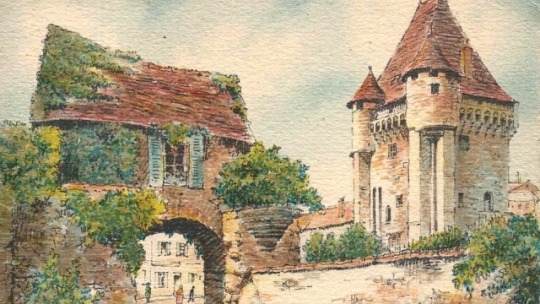
PATRIMOINE | Porte du Croux : écrin du patrimoine nivernais ➽ https://bit.ly/2NvG1WK
Ancienne entrée de la ville de Nevers, la Porte du Croux a résisté au temps et aux péripéties de l'Histoire depuis le Moyen-Âge. Au-delà de son intérêt patrimonial, elle abrite également en son sein les riches collections du Musée archéologique du nivernais
#ephemera#photography#gate#vintage#briefkaart#years#porte#carte postale#french#patrimoine#monument#postcard#photo#sepia#ansichtskarte#nivernais#postkarte#postkaart#france#100 years ago#nevers#medieval#architecture#postal#tarjeta#historic
10 notes
·
View notes
Text

Rosa Bonheur, Ploughing in the Nivernais
3 notes
·
View notes
Text
Cows featured prominently in 19th-century French paintings, often symbolizing rural life, agriculture, and the pastoral beauty of the countryside. Artists like Julien Dupré, Rosa Bonheur, and Marie Dieterle captured these animals with remarkable realism and emotional depth. Julien Dupré depicted laborers with cattle in vibrant, dynamic compositions, emphasizing the connection between humans and nature. Rosa Bonheur, celebrated for her animal paintings, portrayed cows with great detail and dignity, most famously in her painting Plowing in the Nivernais. Marie Dieterle, the daughter of an animal painter, also specialized in portraying cattle, often emphasizing their calm presence in serene landscapes. These artists contributed to the tradition of depicting agrarian life in French art, highlighting the importance of livestock in rural communities.
4 notes
·
View notes




